What are the best lenses for Сanon 90D to buy this year?
If you are the proud owner of the Canon EOS 90D, you need to buy a good lens to improve its performance. To help you make the right choice and capture professional photos, I’ve rounded up the best lenses for Canon 90D.
When it comes to image quality, its level is determined by a lens. The Canon EOS 90D works great for both professional photographers and novices, allowing them to take high-quality images when paired with a decent lens. When choosing a lens for the Canon 90D, you should pay attention to its characteristics, as various lenses are suitable for different purposes and types of shooting.
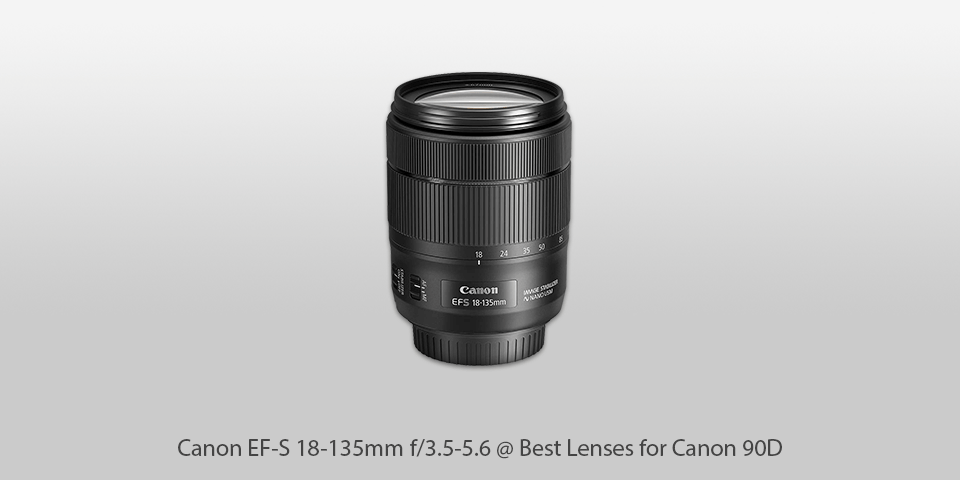
Mount: Canon EF-S | Diaphragm blades: 7 | Autofocus: Yes | Min focus distance: 0.39 m | Max magnification: 0.28x | Filter thread: 67 mm | Dimensions (WxL): 77.4x96 mm | Weight: 515 g
⊕ The latest NANO USM technology
⊕ Well-stabilized image
⊕ Fast and silent autofocus
⊕ Accurate optics
⊖ Power Zoom accessory
⊖ Dark corners at the widest aperture
The EF-S 18-135mm is a lens for Canon 90D that is similar to a 28.8-216mm. It was released for DSLR cameras in the APS-C format. Featuring Canon’s latest NANO USM technology, the lens offers great performance for everyday shooting. Lenses equipped with this technology are characterized by fast focusing and quiet performance when shooting videos.
The EF-S 18-135mm is considered to be one of the best lenses for Canon 90D on the market nowadays. It is suitable for both portrait and landscape picture-taking producing high-quality pictures regardless of light conditions.
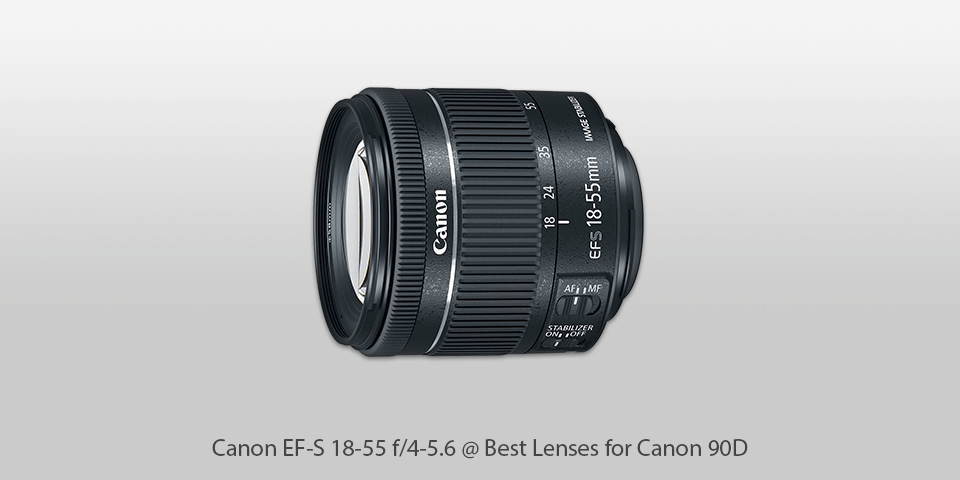
Mount: Canon EF-S | Diaphragm blades: 7 | Autofocus: Yes | Min focus distance: 0.25 m | Max magnification: 0.25x | Filter thread: 58 mm | Dimensions (WxL): 66.5x61.8 mm | Weight: 215 g
⊕ High-speed autofocus
⊕ Remarkable sharpness
⊕ Affordable
⊕ Well-stabilized optics
⊖ Not dust/splash-resistant
⊖ Narrow aperture
The EF-S 18-55 portrait lens for Canon 90D is suitable for everyday shooting. With the same focal length characteristics as a 28.8-88 mm lens, it covers both wide-angle and portrait perspectives. The Canon EF-S 18-55 has excellent image stabilization, which minimizes shake, and offers fast, quiet autofocus.
This model is portable due to its small size and weight, which makes it perfect for those who are often on the road. You will love its innovative design that combines convenience and elegance. The top of the lens is covered with black leather for a tighter grip and comfortable handling.
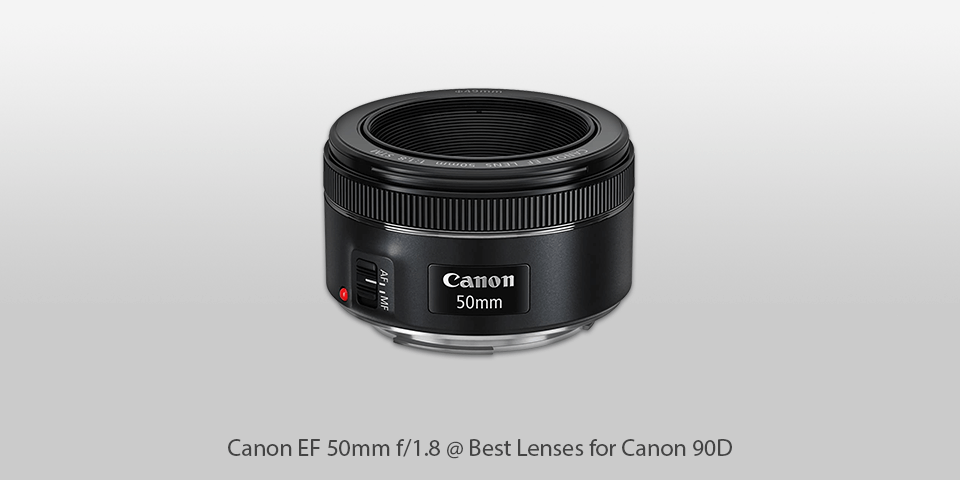
Mount: Canon EF | Diaphragm blades: 7 | Autofocus: Yes | Min focus distance: 0.35 m | Max magnification: 0.21x | Filter thread: 49 mm | Dimensions (WxL): 69.2x39.2 mm | Weight: 160 g
⊕ Perfect for low-light conditions
⊕ Accurate focusing
⊕ Amazing portraits
⊕ Metal mount
⊖ Slower focus
The Canon EF 50mm f/1.8 is a great everyday lens that is quite compact and easy-to-use. The STM technology delivers decent performance, quiet ongoing autofocus during video recording and fast focus for photos. Besides, you can manually adjust the focus.
It is a video lens for Canon EOS 90D that comes at a reasonable price. At the same time, the lens has a reliable build quality. An additional advantage is that this model creates good outdoor and portrait shots in poor light conditions.
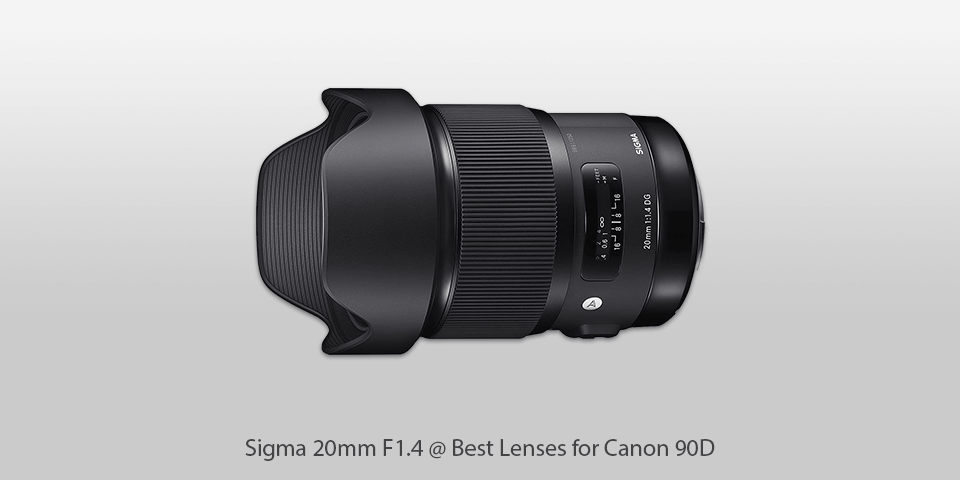
Mount: Canon EF | Diaphragm blades: 9 | Autofocus: Yes | Min focus distance: 0.27 m | Max magnification: 0.14x | Filter thread: No | Dimensions (WxL): 90.7x129.8 mm | Weight: 950 g
⊕ Great design
⊕ Excellent brightness and bokeh
⊕ Quick and noiseless autofocus
⊕ Suitable for low-light conditions
⊖ No image stabilization
If you are looking for a good camera lens for Canon EOS 90D with a new optical design and solid construction, I recommend choosing the Sigma 20mm F1.4. This fast lens makes your images look brighter and produces great bokeh. Thanks to the optimized power distribution and innovative optics, the lens minimizes spherical aberration, axial chromatic aberration, and curvature of the field offering high-quality images.
Due to its wide focal length, the Sigma 20mm does an excellent job of capturing photos of landscapes, interiors and architecture. Plus, with an aperture of f/1.4, you can shoot in low light without image quality loss.
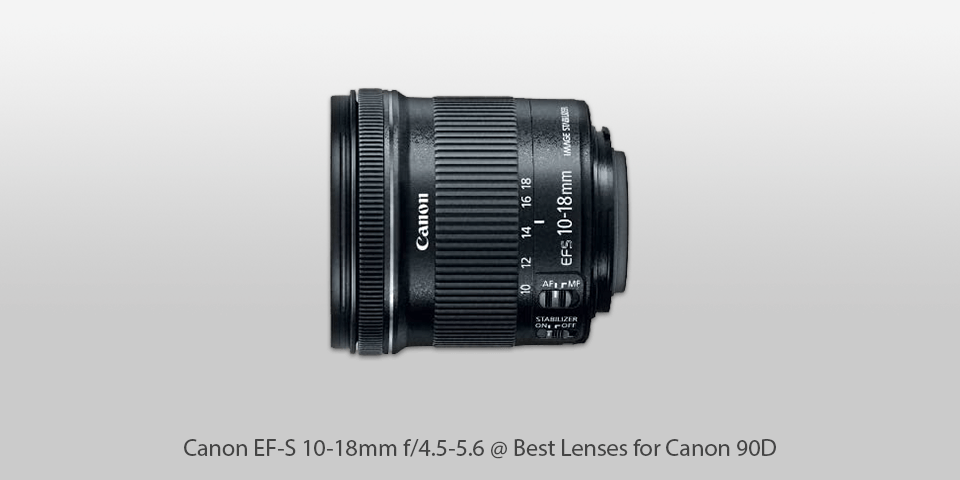
Mount: Canon EF-S | Diaphragm blades: 7 | Autofocus: Yes | Min focus distance: 0.22 m | Max magnification: 0.15x | Filter thread: 67 mm | Dimensions (WxL): 74.6x72 mm | Weight: 240 g
⊕ Variable focal length
⊕ Portable
⊕ Sharp pictures
⊖ Poor bokeh effect
⊖ Not weather-resistant
If you are looking for budget video lenses for 90D, I recommend considering the EF-S 10-18mm. The specifications of this lens are the same as that of the 16-28.8mm. This model was designed for digital SLR cameras with an EF-S mount. The Canon EF-S 10-18mm works great for video recording as it offers noiseless autofocus. Additional advantages are its robust and reliable build quality, compactness and portability.
The Canon EF-S 10-18mm is also suitable for ultra-wide-angle shots with the Canon APS-C DSLR camera. For its price, the lens delivers excellent performance and has useful features.
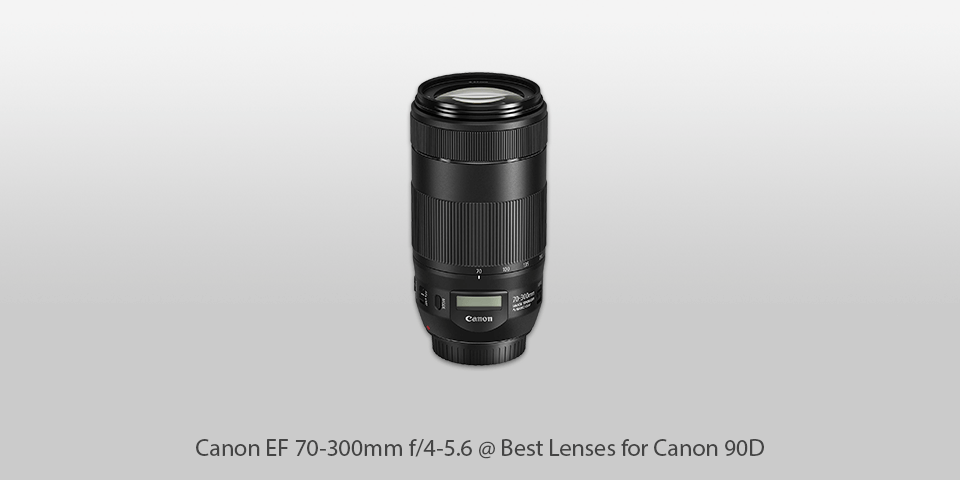
Mount: Canon EF | Diaphragm blades: 9 | Autofocus: Yes | Min focus distance: 1.2 m | Max magnification: 0.25x | Filter thread: 67 mm | Dimensions (WxL): 80.01x145.54 mm | Weight: 710 g
⊕ Strong design
⊕ High-speed autofocus
⊕ Well-stabilized image
⊕ High sharpness
⊖ Not weather-resistant
This Canon EOS 90D telephoto lens combines good performance, price and compactness. It produces well-stabilized images. The latest Nano USM technology provides users with fast and quiet autofocusing.
The most distinctive feature of this lens is the new LCD panel on the top. This model was designed specifically for Canon’s mid-range DSLRs and delivers high-quality images. It’s quite portable and convenient to use.
| Image | Name | Features | |
|---|---|---|---|
 |
Canon EF-S 18-135mm f/3.5-5.6
Our Choice |
CHECK PRICE → | |
 |
Canon EF-S 18-55 f/4-5.6
for Everyday Use |
CHECK PRICE → | |
 |
Canon EF 50mm f/1.8
Budget |
CHECK PRICE → |
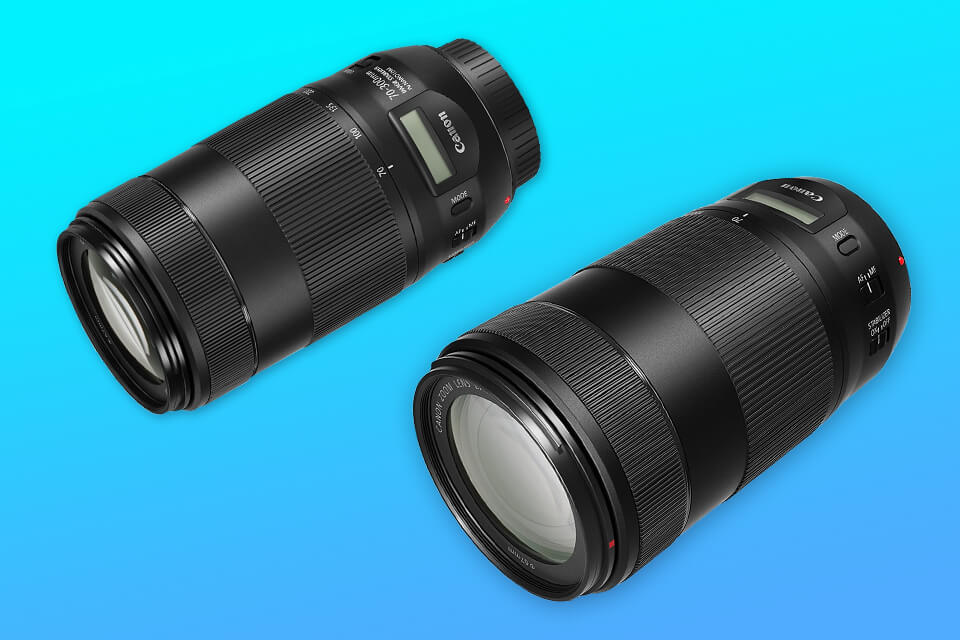
Before talking about the strengths and weaknesses of zooms and primes, you should decide on the purpose of using them, because this is the decisive factor when buying a lens. While the Canon 90D zoom lens spans a useful focal length range, prime lenses with fixed focal lengths are extremely fast, more portable and produce less distortion if you compare them to zoom lenses.
With USM lenses, you need to get used to noisy autofocusing, however, they are faster and more accurate than most. The latest STM lenses have smooth and noiseless autofocus when shooting movies. Alternative Nano USM lenses offer a fast focus for photos and a smooth focus for videos. The Canon EF-S 18-135mm f/3.5-5.6. comes with such autofocus.
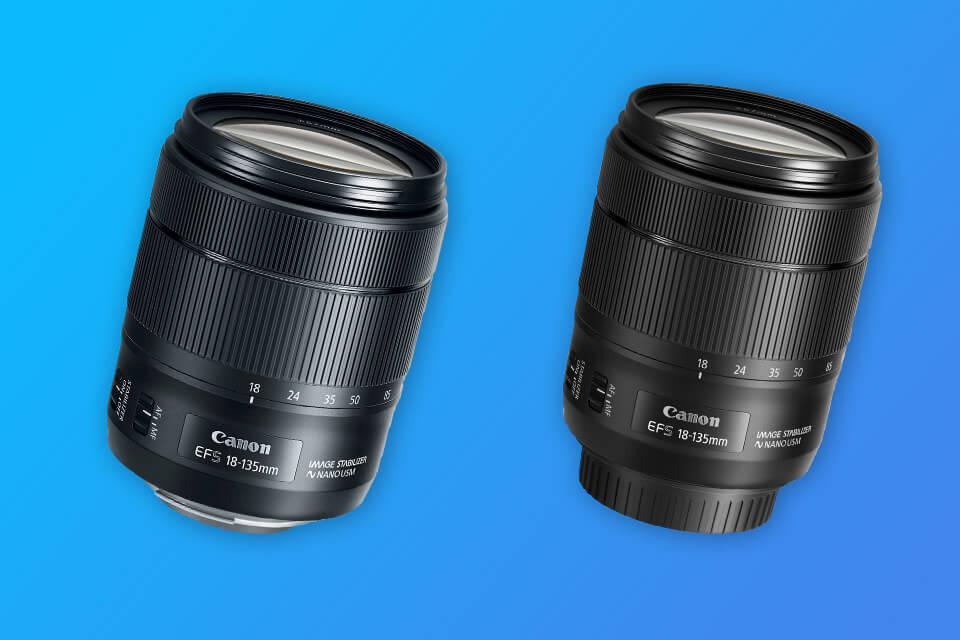
To produce high-quality images, a lens should have good image stabilization. It helps reduce shake and balance the frame. With perfect stabilization, you can minimize distortion.
A prime lens has only one focal length, which means you can get closer to the object only if you walk to it. These lenses are generally faster and more portable but less convenient to use compared to zoom lenses.
I recommend considering the models like the Canon EF-S 18-135mm f/3.5-5.6 and Canon EF 70-300mm f/4-5.6, both of which have good sharpness.
In my opinion, the Sony 16-35mm F2.8 is the most suitable multi-purpose model.
Unlike zoom lenses, prime lenses are significantly sharper. This is due to the lack of the extra glass elements used in zoom models. Prime lenses do not have them. Because of the minimal diffraction, you can capture high-quality photographs with prime lenses. The diffraction level is directly related to the number of details inside a lens.

 Rating
Rating